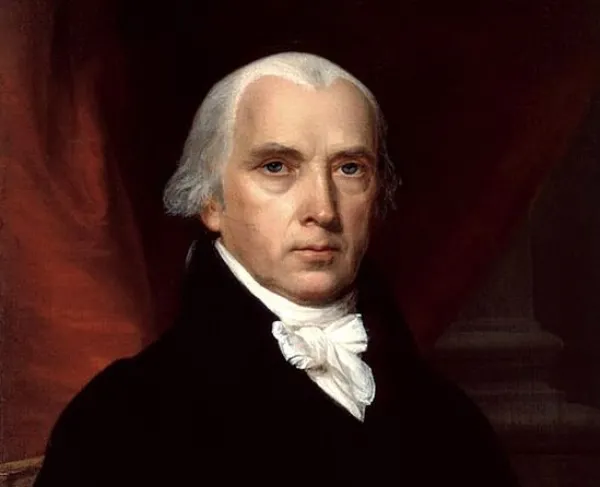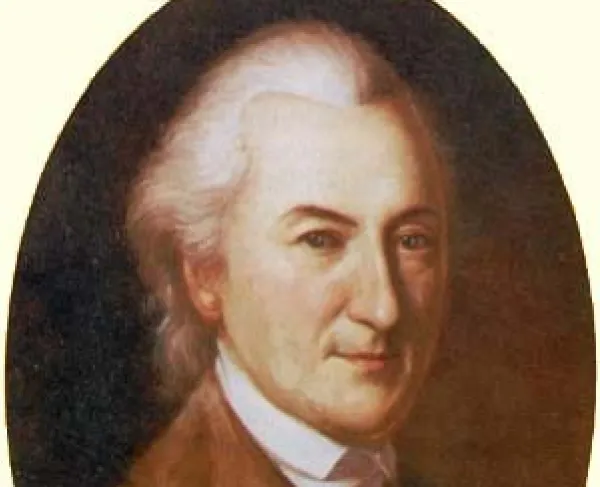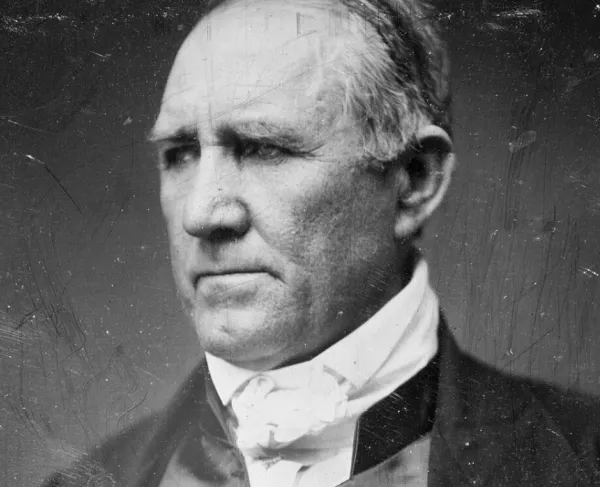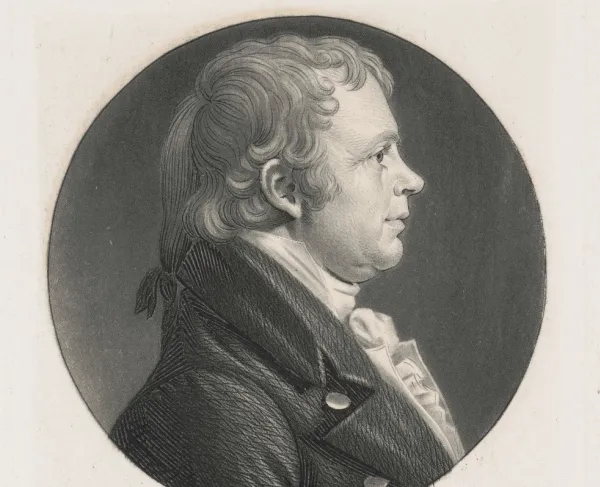James Madison

James Madison was born on March 16, 1751, in Port Conway, Virginia, to James Madison Sr. and Nelly Conway. After his birth, the family returned to the Madison estate in Orange County, Virginia. At an early age, his mother was responsible for Madison's education. Nelly taught Madison essential reading and writing. At ten years old, Madison's parents sent him to a boarding school where he gained an early education and learned six languages (English, Spanish, French, Italian, Latin, and Greek). After attending the boarding school, James Madison studied under Scottish enlightenment thinker Thomas Martin. Under Martin, Madison learned enlightenment ideals and read philosophers including John Locke, Thomas Hobbes, and Montesquieu. Following his teacher's footsteps, Madison enrolled in the College of New Jersey, known today as Princeton University. While in school, the President of the University, John Witherspoon, invited Madison to study the Enlightenment further and learn the Hebrew language. After graduating with a bachelor's in art, Madison returned home to Montpelier in 1772 at the age of 21. While at home, Madison began to explore career paths, including law, farming, and politics. James Madison Sr, the head of the Orange County Committee of Safety, began taking Madison to local government meetings. While attending meetings with his father, he developed his love for public service and politics.
In 1775, the American Revolution began with the firing at Lexington and Concord. The colony of Virginia called men to arms, including James Madison. Due to his finances and education, James was granted the title of colonel in the Orange County militia. Madison often suffered from health issues, including mental exhaustion and heightened anxiety; therefore, his service was brief. In 1776, Madison left the militia to serve in the Fifth Virginia Convention. While at the convention, Madison was responsible for creating Virginia's first Constitution and contributing to the Virginia Declaration of Rights. The Virginia Declaration of Rights allowed the colony to declare the inherent rights of men and the ability to reform and abolish government. While working alongside primary author George Mason, Madison added the importance of religious freedom to the document. Stating that men had "equal entitlement" to religion instead of "mere tolerance." The ratification of the Virginia Declaration of Rights aided Madison's election to the Virginia House of Delegates, where he met longtime friend and political ally Thomas Jefferson. Later that year, the Declaration of Independence was signed, officially declaring the colonies free from Great Britain. Madison continued to serve as a Virginia delegate and supported pro-revolution policies. He continued to work as a delegate and participated in debates and policymaking regarding the Articles of Confederation.
The Articles of Confederation aimed to create a new form of government to create unity among the colonies. Ratified in 1781, the Articles became the first official form of government for the United States. As Madison served in the Second Continental Congress, he met fellow delegates, including Alexander Hamilton. The pair often discussed the government's flaws and what changes needed to be made for success. After gaining additional support, the pair hosted a convention in Annapolis, Maryland, to discuss necessary changes for the Articles. Unfortunately, only a few delegates attended the Annapolis Convention causing Madison to reach out to George Washington for assistance. When Madison returned to Virginia, he stopped a Mount. Vernon convinced Washington that a new government was necessary for the United States' survival. Washington agreed, and congress set a date for the Constitutional Convention. In 1787, Madison arrived in Philadelphia along with his fellow Virginia delegates George Washington, George Mason, and Edmond Randolph.
During the Constitutional Convention, Madison introduced the Virginia Plan, a plan for a strong central government and three branches that serve under a checks and balances system. After Madison presented the Virginia Plan, William Patterson brought forward the New Jersey plan. Madison worked together with his fellow delegates to compromise the two plans. For the Constitution to be accepted by the American government, two-thirds of the 13 states had to ratify the document. Working together, James Madison, Alexander Hamilton, and John Jay convinced their fellow delegates of the absolute necessity of a new government through a series of essays titled the Federalist Papers. Each paper's goal was to support the Constitution and provide clarity for the future of America. James Madison wrote twenty-nine out of eighty-five Federalist essays, aiding the ratification of the Constitution. Madison's contributions to the Constitution included adding religious freedom to the First Amendment and editing the first nine amendments, which later became the Bill of Rights. Madison also kept detailed notes of the meeting to allow future historians to understand the complexity of the Constitutional Convention. Due to these contributions, Madison gained the nicknames Father of the Constitution and the Architect of the Bill of Rights.
On June 21, 1788, The Constitution was officially ratified, making George Washington the first President of the United States. Madison continued to work in politics, including writing George Washington’s inaugural address and becoming a member of the House of Representatives. During Washington’s presidency, Madison and Jefferson developed the Democratic-Republican party, which opposed Alexander Hamilton and John Adams' Federalists. In 1794, James Madison met Dolley Payne Todd in Philadelphia; the pair quickly fell in love and married in Virginia. The couple lived together at Montpelier until 1801 when Thomas Jefferson was elected as the third president. Madison was appointed as Secretary of State and was a considerable influence within Jefferson’s cabinet. During his time as Secretary of State, he was involved with the landmark Supreme Court Case, Marbury. Vs. Madison, which established the power of judicial review and aided with the Louisiana Purchase. During the later years of the Jefferson administration, Madison was deeply involved with the Embargo Act of 1807. The act attempted to stop British impressment and confront the British after the Chesapeake-Leopard Affair. After serving as Secretary of State, Madison ran for President in 1808 against John Randolph and was victorious.
During Madison’s presidency, Warhawks led by Henry Clay and John Calhoun pushed war with the British. On June 1, 1812, Madison asked Congress to declare war on the British. Many groups opposed the War of 1812, including the Northern States, due to its effects on the commercial market. Despite opposition, the government saw the north as access to British Canada and attempted to take Canada multiple times throughout the war but failed. Throughout the war, Madison gained popularity when he rode out to battle to support the troops and reassured the country when the White House was burning during the Battle of Bladensburg. The Treaty of Ghent was negotiated and signed on February 16, 1815, establishing the war as inconclusive. Due to the United States’ resilience and victories like the Battle of New Orleans, the American people considered the war a United States victory. In 1817, Madison retired from the White House and returned home with Dolley to Montpelier. He continued to visit fellow allies, Thomas Jefferson and James Monroe. During his retirement, the Madisons translated his notes from the Constitutional Convention to sell to Congress when he died. James Madison died on June 28, 1836, at 85, as the United States last remaining founding father.





